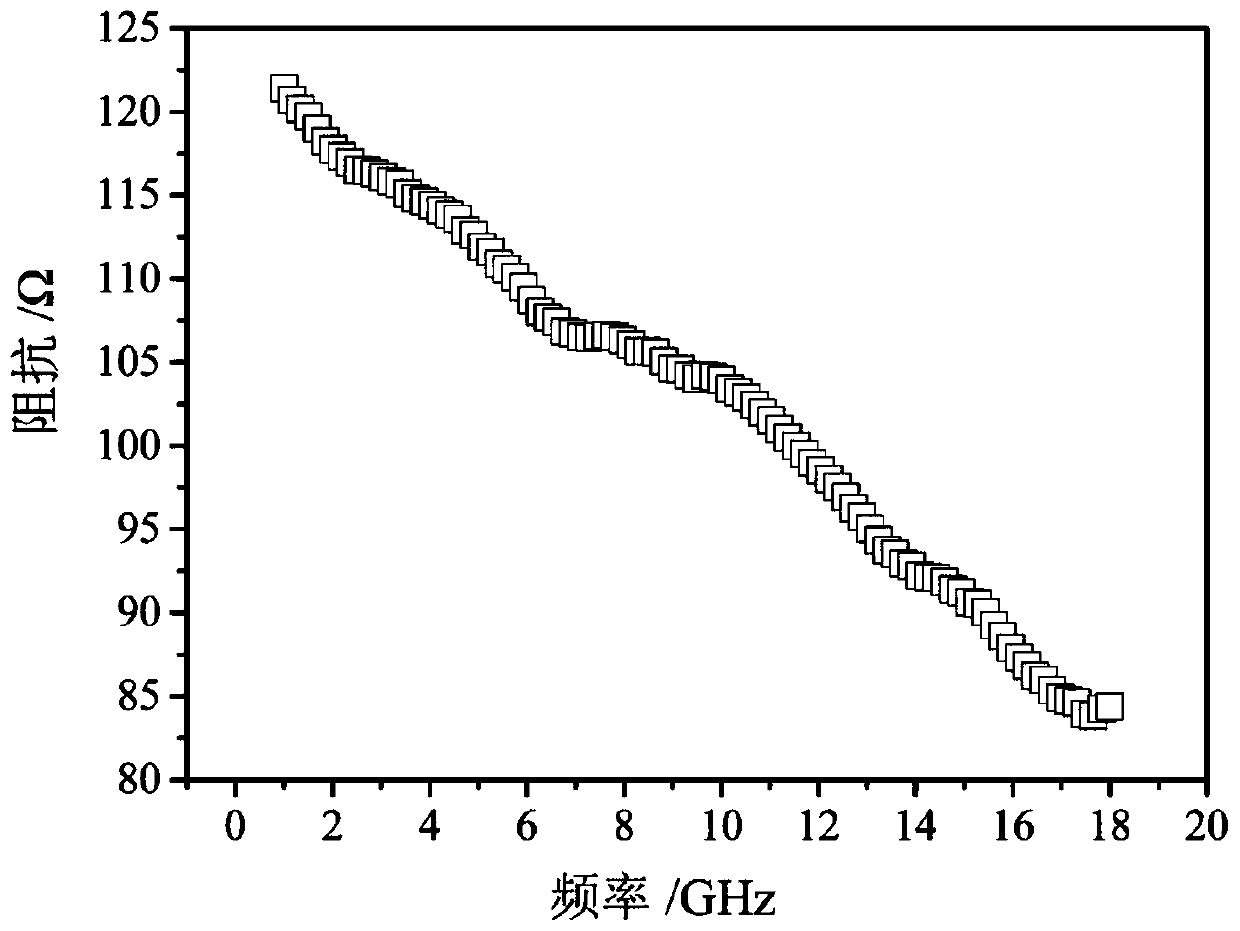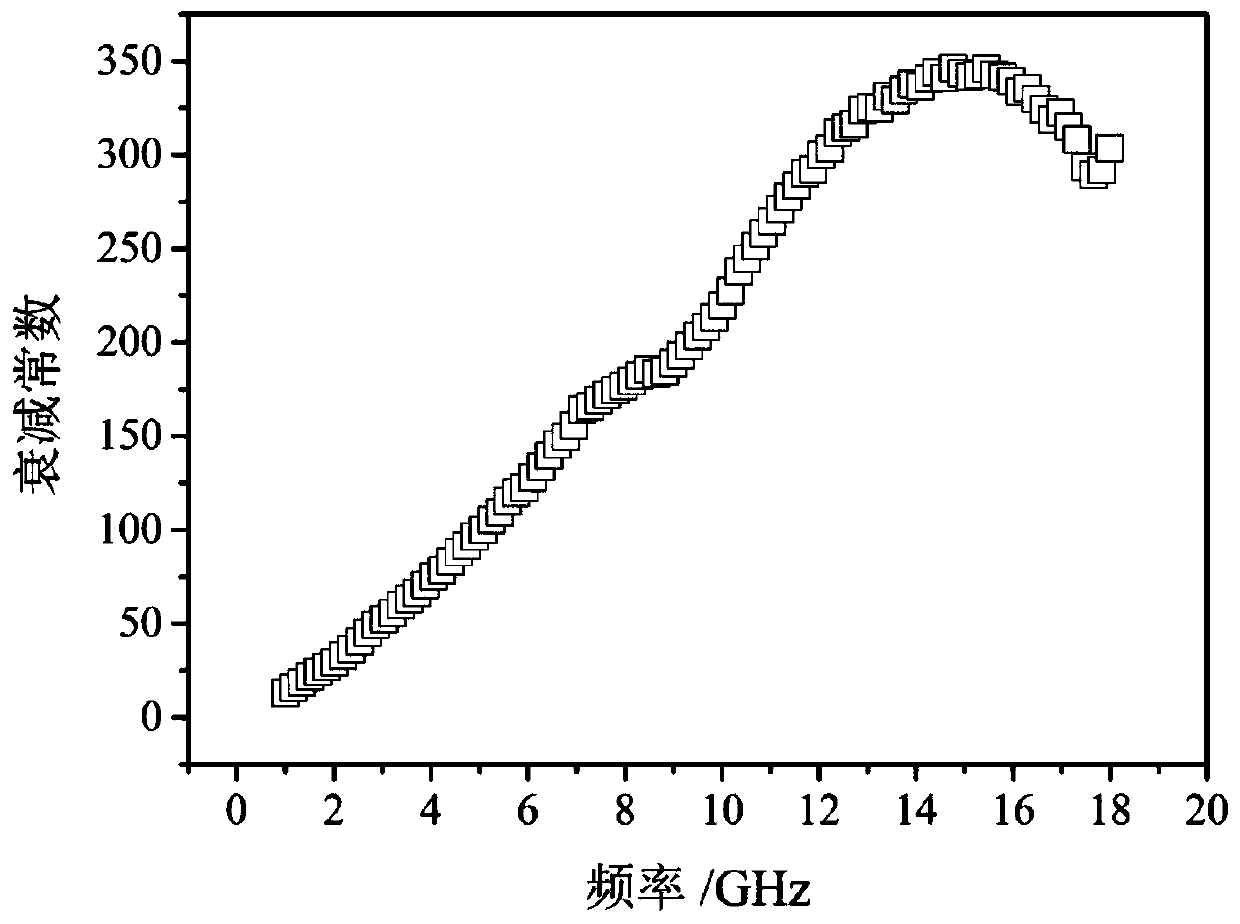Enhanced material for magnetic beads, preparation method of enhanced material and preparation method of laminated magnetic beads
An enhanced, magnetic bead technology, applied in the direction of magnetic materials, inductors/transformers/magnet manufacturing, magnetic objects, etc., can solve the problem of low bonding strength
- Summary
- Abstract
- Description
- Claims
- Application Information
AI Technical Summary
Problems solved by technology
Method used
Image
Examples
preparation example Construction
[0039] The application also provides a method for preparing the enhanced material for magnetic beads, comprising the following steps:
[0040] A) ZrO 2 Powder, SiO 2 Powder, Al 2 o 3 Powder, TiO 2 Powder, B 2 o 3 Powder and mica KAl 2 (AlSi 3 o 10 )(OH) 2 The powder is ball milled and mixed to obtain the additive;
[0041] B) FeCoNiCrAl@SiO with core-shell structure 2 The high-entropy alloy is mixed with the additive to obtain a reinforced material for magnetic beads.
[0042] In the above-mentioned enhanced material for magnetic beads, the ZrO 2 Powder, SiO 2 Powder, Al 2 o 3 Powder, TiO 2 Powder, B 2 o 3 Powder and mica KAl 2 (AlSi 3 o 10 )(OH) 2 The particle size of the powder is 1-20 μm. During the ball milling process, the ball-to-material ratio of the ball mill is (10-20):1, and the rotation speed is 100-300 r / min.
[0043] The above-mentioned base materials and additives have been described in detail and will not be repeated here.
[0044] The p...
Embodiment 1
[0054] (1) Fe powder, Co powder, Ni powder, Cr powder and Al powder are measured in equal atomic proportions, and the particle diameters are all between 1 and 10 μm; the powders are respectively placed in hydrochloric acid with a dilution concentration of 0.1%. Wash at room temperature for 3 minutes to remove surface scale. After completion, wash with deionized water for 3 times and absolute ethanol for 3 times, dry in vacuum, and mix for later use;
[0055] (2) Place the mixed powder in the above (1) in a ball mill for ball milling, the ball-to-material ratio is 20:1, the rotating speed: 300r / min, and the ball milling time: 50h, that is, a high-entropy alloy FeCoNiCrAl is prepared, and the powder is collected for later use;
[0056] (3) Prepare 500mL solution, including 400mL absolute ethanol, 95mL deionized water, and 5mL ammonia water, and stir evenly;
[0057] (4) The mixed powder described in (2) above is slowly added to the solution in (3) above, and fully stirred for 5 ...
Embodiment 2
[0068] (1) Fe powder, Co powder, Ni powder, Cr powder and Al powder are measured in equal atomic proportions, and the particle diameters are all between 1 and 10 μm, and the powders are respectively placed in hydrochloric acid with a dilution concentration of 0.1%. Wash at room temperature for 3 minutes to remove surface scale. After completion, wash with deionized water for 3 times and absolute ethanol for 3 times, dry in vacuum, and mix for later use;
[0069] (2) Place the mixed powder in the above (1) in a ball mill for ball milling, the ball-to-material ratio is 20:1, the rotating speed: 300r / min, and the ball milling time: 50h, that is, a high-entropy alloy FeCoNiCrAl is prepared, and the powder is collected for later use;
[0070] (3) Prepare 500mL solution, including 400mL absolute ethanol, 95mL deionized water, and 5mL ammonia water, and stir evenly;
[0071] (4) The mixed powder described in (2) above is slowly added to the solution in (3) above, and fully stirred fo...
PUM
| Property | Measurement | Unit |
|---|---|---|
| Particle size | aaaaa | aaaaa |
| Particle size | aaaaa | aaaaa |
Abstract
Description
Claims
Application Information
 Login to View More
Login to View More - R&D
- Intellectual Property
- Life Sciences
- Materials
- Tech Scout
- Unparalleled Data Quality
- Higher Quality Content
- 60% Fewer Hallucinations
Browse by: Latest US Patents, China's latest patents, Technical Efficacy Thesaurus, Application Domain, Technology Topic, Popular Technical Reports.
© 2025 PatSnap. All rights reserved.Legal|Privacy policy|Modern Slavery Act Transparency Statement|Sitemap|About US| Contact US: help@patsnap.com


